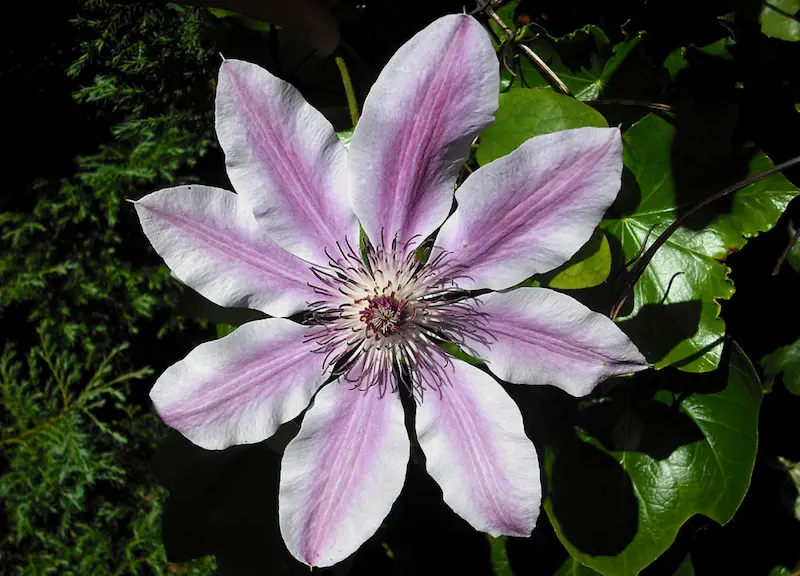Clematis: To Prune or Not to Prune

Jolly Janner, Public domain, via Wikimedia Commons
Author: Dale Odorizzi, Master Gardeners of Lanark County; published with permission
Few subjects in gardening are as confusing as the proper pruning of clematis. As Yogi Berra once said, “You can observe a lot by just watching”. The easiest way to determine the specific pruning needs of your clematis is to watch it grow through a season. It will not harm your plant to leave it unpruned for one season.
When Clematis Flowers in April and May
Group A — If a clematis blooms only in April and May, it belongs to Group A and flowers only on old wood (last season’s growth). To prune this group, remove any dead stems and weak growth as soon as flowering is finished. Clematis alpina and C. macropetala hybrids only grow to about two metres and should not be pruned heavily, or next year’s flowers may be lost. C. montana and C. armandii grow so rampantly that they may need to be cut back yearly to keep growth manageable.
When Clematis Flowers in May, June and again September
Group B — If a clematis blooms in May and June and again in September, it belongs to Group B. This group has very large, showy flowers on old wood in late spring and a smaller flush of flowers on the current season’s growth in late summer. A good example of this group is C. ‘Nelly Moser’. Remove dead and weak stems in early spring, just as the leaf buds begin to swell. The whole vine can be given a light pruning for shape at that time. Cut each stem separately, varying the lengths for a more natural look, rather than chopping all stems off to the same height.
When Clematis Flowers in June or July through to September
Group C — If a clematis starts to flower in June or July and blooms almost nonstop through September, it belongs in Group C and flowers only on new wood. Their vines reach three metres tall. C. ‘Jackmanii’ is one widely grown variety. Prune this group hard every year to stimulate fresh new growth. This means cutting back each stem to two strong sets of leaf buds just as they begin to swell in early spring. On established vines, prune to within 60 cm of the ground. This hard pruning will guarantee flowers over the entire length of the vine. If a Group C clematis is not pruned hard, it will bloom but only on the current season’s growth which will begin where last year’s growth ended, leaving long bare stems. Late bloomers are usually classed withGroup C for pruning. Most popular is C. tangutica,the hardy golden clematis with small yellow lanternshaped flowers from July through September, followed by attractive, fluffy seed heads. These too can be left unpruned to cover a fence or sprawl across the ground.
An overgrown or neglected clematis of any type can be invigorated by pruning hard in early spring at any height you like if some leaf buds remain. New growth will appear quickly, thanks to the large, established root system of the vine. Flowers may not appear until next season if they are the type to bloom only on old wood.
Clematis vines can last for 15 to 20 years or longer. They like cool roots, so cover their roots with thick mulch. With regular pruning, these plants will provide beauty for years to come.